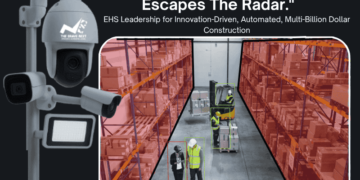Introduction
Medical drones are transforming the healthcare industry by providing rapid, efficient, and reliable medical deliveries, especially in remote and emergency situations. These unmanned aerial vehicles (UAVs) are increasingly being used to transport medical supplies, organs, blood, vaccines, and even defibrillators to areas with limited access to healthcare facilities. With advancements in drone technology, artificial intelligence, and automation, medical drones are paving the way for a new era of emergency response and healthcare logistics.
This article explores the importance, applications, benefits, challenges, and future trends of medical drones in the global healthcare sector.
Understanding Medical Drones
Medical drones are specially designed UAVs equipped with advanced navigation systems, sensors, and payload compartments to carry medical supplies safely. These drones can operate autonomously or be remotely controlled, ensuring timely medical interventions.
Key Features of Medical Drones:
- Autonomous Navigation: AI-driven GPS and sensor-based navigation for precise deliveries.
- Temperature-Controlled Compartments: Ensuring the safe transport of temperature-sensitive medical supplies.
- Real-Time Tracking: Live monitoring of drone movements for secure deliveries.
- Emergency Deployment: Rapid response in disaster-hit or remote areas.
Applications of Medical Drones
Medical drones are utilized in various healthcare scenarios to enhance accessibility and efficiency. Some key applications include:
1. Emergency Medical Supply Delivery
- Transporting blood, plasma, and essential drugs to accident or disaster sites.
- Rapid deployment of defibrillators for cardiac emergencies.
2. Vaccine and Medicine Distribution
- Delivering vaccines to remote villages and disaster-struck regions.
- Ensuring uninterrupted supply of critical medications for chronic disease patients.
3. Organ and Tissue Transport
- Faster organ delivery for time-sensitive transplants.
- Maintaining organ viability with specialized drone compartments.
4. Disaster and Pandemic Response
- Providing immediate medical aid to disaster-stricken regions.
- Reducing human exposure to highly infectious diseases like COVID-19 and Ebola.
5. Search and Rescue Operations
- Locating injured individuals and providing medical kits.
- Enhancing emergency medical response in inaccessible terrains.
Benefits of Medical Drones
1. Faster Emergency Response
- Reduces time taken to deliver lifesaving medical supplies, increasing survival rates.
2. Improved Healthcare Accessibility
- Serves remote and underserved communities lacking adequate medical infrastructure.
3. Cost-Effective Logistics
- Lowers transportation costs compared to traditional medical supply chains.
4. Reduced Traffic and Environmental Impact
- Minimizes congestion in urban areas and reduces carbon footprint.
5. Enhanced Safety for Medical Personnel
- Limits human exposure to high-risk environments, such as pandemics and war zones.
Challenges in Medical Drone Deployment
1. Regulatory and Airspace Restrictions
- Strict aviation laws limit drone operations in many regions.
2. Technical and Maintenance Issues
- Drones require robust designs, advanced battery technology, and regular maintenance.
3. Security and Privacy Concerns
- Risk of drone hijacking or data breaches in critical medical deliveries.
4. Weather and Geographic Limitations
- Extreme weather conditions and rugged terrains can impact drone performance.
5. Public Acceptance and Ethical Concerns
- Fear of drone accidents and privacy invasion affects large-scale adoption.
Market Trends in Medical Drones
1. AI and Automation in Drone Operations
- Intelligent AI-driven drones for precise, autonomous medical deliveries.
2. Expansion in Developing Countries
- Increased adoption in Africa and Asia to address healthcare accessibility issues.
3. Government and Private Sector Collaborations
- Public-private partnerships driving investment in drone healthcare solutions.
4. Innovations in Battery and Payload Technologies
- Development of long-range drones with improved battery life and load capacity.
Future of Medical Drones
1. Drone-to-Drone Communication
- Networks of medical drones working collaboratively for enhanced efficiency.
2. Integration with 5G and IoT
- Real-time tracking and seamless data transmission for precision medicine delivery.
3. Urban Air Mobility and Smart Cities
- Future integration of drones into smart city healthcare frameworks.
4. Biodegradable and Eco-Friendly Drones
- Development of sustainable drone materials to reduce environmental impact.
Source : https://www.databridgemarketresearch.com/reports/global-medical-drones-market
Conclusion
Medical drones represent a breakthrough in healthcare logistics, emergency response, and accessibility. While challenges exist, ongoing advancements in technology, regulations, and infrastructure will drive the widespread adoption of medical drones. As healthcare continues to evolve, drones will play an increasingly vital role in saving lives and improving global healthcare outcomes.
Other Trending Report :
Global Financial Crime and Fraud Management Solutions Market – Industry Trends and Forecast to 2029
https://www.databridgemarketresearch.com/reports/global-financial-crime-and-fraud-management-solutions-market
Middle East and Africa Modular Construction Market – Industry Trends and Forecast to 2030
https://www.databridgemarketresearch.com/reports/middle-east-and-africa-modular-construction-market
Middle East and Africa Edible Oil Market – Industry Trends and Forecast to 2029
https://www.databridgemarketresearch.com/reports/middle-east-and-africa-edible-oils-market
Belgium Insulation Market – Industry Trends and Forecast to 2028
https://www.databridgemarketresearch.com/reports/belgium-insulation-market
Europe Gym Management Software Market – Industry Trends and Forecast to 2029
https://www.databridgemarketresearch.com/reports/europe-gym-management-software-market
Global Women’s Footwear Market – Industry Trends and Forecast to 2031
https://www.databridgemarketresearch.com/reports/global-womens-footwear-market
Global Tumor Immunotherapy Market – Industry Trends and Forecast to 2028
https://www.databridgemarketresearch.com/reports/global-tumor-immunotherapy-market
Global External Ventricular Drain Market – Industry Trends and Forecast to 2031
https://www.databridgemarketresearch.com/reports/global-external-ventricular-drain-market
Global Injection Pen Market – Industry Trends and Forecast to 2029
https://www.databridgemarketresearch.com/reports/global-injection-pen-market
Global Hemophilia B Market – Industry Trends and Forecast to 2029
https://www.databridgemarketresearch.com/reports/global-hemophilia-b-market



























